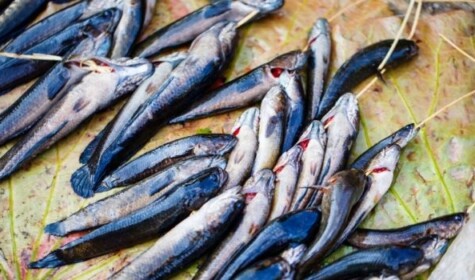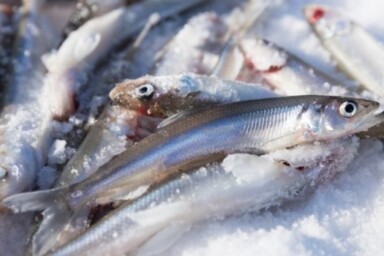Dying oceans
According to a recent article by Professor of Marine Conservation Biology, Boris Worm at Dalhousie University, the oceans will be devoid of seafood by 2048. This is, of course, assuming that people continue to eat the way they do now. In the US alone 4.8 billion lbs of seafood are consumed a year, two-thirds of which is farmed. The research cites over-fishing, pollution and climate change as major culprits alongside rampant consumption. At face value, this could mean the end of eating seafood in a near future.
However, we are not at the end yet, and the effects of overfishing may be reversible if some dramatic changes are made. While never touching seafood again is an easy solution to this problem, it’s not particularly realistic to expect consumers to follow suit. People simply love fish too much, and they will choose to eat the food that they like, but it’s important to consider the impact of these choices and indulge cravings sustainably.
Overfishing is not the main cause of our dying oceans, and while it can seem an overly-complex problem, it can be, in part, tackled with some responsible buying tactics. In addition to common-sense practices like buying wild and local fish when possible, there is an overlooked factor that could allow one to partake in seafood with some peace of mind. This concept is the seasonality of seafood.
Why does seafood have seasons?
“There are plenty of fish in the sea” is what they say, but if that’s true, why do people eat only a handful of different species? Ask someone their favourite fish or seafood and they might say salmon, tuna, or perhaps crab or shrimp. While a world of delicacies lies in the ocean, much of the western world limits themselves to a few widely eaten species. Recently, the efficiency of modern fishing techniques have allowed us to ignore the cycle in which fish spawn, grow and develop. Because of this, highly seasonal and eagerly awaited seafood can be harvested throughout the year.
Seafood seasonality is not dependant on climatic seasons, instead it is the times when fish are at peak harvest and most abundant. Unless you are directly involved in the fishing industry or live in a coastal community, you probably are not too familiar with this. However, the seasonality of fish has a direct impact on its sustainability. For example, if fish are being harvested during spawning season, stocks could diminish. By purchasing out of season fish, not only are you negatively impacting fish stocks, but you are more likely buying from distant sources, raising the ‘true cost’ of your dinner with unnecessary transport. Aside from environmental impact, out of season fish doesn’t have nearly the quality of fresh local fish, as it’s often frozen and thawed repeatedly before reaching your grocer. It’s similar to eating strawberries in winter – they’re likely to be tasteless and past their prime.
While the concept is related, local fishing seasons do not always reflect the seasons that fish should be harvested. These are the seasons determined and imposed by local governments that say when fisher folk are allowed to fish for certain fish. Local governments in coastal areas sometimes try to expand fishing seasons to help fisher folk get a better harvest. These guidelines are not necessarily beneficial to the consumer unless you have a direct stake in the market. Instead of focusing on this aspect of seasonality, we can make a bigger impact by simply avoiding eating fish during their respective spawning periods.
How can consumers even begin to choose seafood that’s in season? It’s certainly something you won’t find on the label. The answer can vary by location and the kind of seafood in question. Some wild fish, like salmon, come mostly from one area of the world, giving it one major season. Other fish, like tuna, offer so much variety in terms of location and species, that the season is highly variable. Let’s take a look at some popular seafood to determine their peak seasons.
Salmon
A very small percentage of wild salmon comes from the west coast of America’s mainland or from Scotland, but 90% of the world’s ‘peak-season’ wild salmon comes from Alaska. This makes it very easy to gauge when to purchase. Typically this lasts from June-September, with peak season between June and July. The risk of purchasing out-of-season salmon is that in addition to being harvested prior to or during spawning, they could also be from areas in the world where stocks are perennially low. For example, the Pacific Northwest has especially low salmon stocks and is sold to supplement the Alaskan salmon harvest (try to avoid this Pacific Northwest Salmon unless it is in-season and reefnet harvested). However, most grocery stores will stock frozen wild Alaskan salmon all year long, and because of its high-seasonality, this frozen or cured salmon is usually harvested in season. This means that purchasing frozen wild Alaskan salmon during off seasons is typically a safe buy.
Tuna
Tuna is a great example of the complexity of fishing seasons. There is a wide variety of species (Albacore, Yellowfin, Bluefin, etc.) and their reach extends throughout much of the world. Because Tuna migrate across oceans to their birthing sites, they face the peril of being fished there and in a variety of locations when traveling to and from these sites. Bluefin tuna is one of the more sought after varieties, but after years of irresponsible fishing practices, Bluefin is now critically endangered and should be off the menu entirely, either in season or out . Eating other varieties of tuna – for example, Yellowfin and Albacore, is only sustainable dependent on its location and the method of fishing and its seasonality adds another dimension to consider. Pole and short line caught Skipjack tuna is about the only tuna that can be consumed with any clear conscience.
While it’s possible to purchase tuna from medium-low stocks, it’s not something you want to do if you care about this fish’s future. At this time, there is no high-stock tuna to be found, and so there is no ‘seasonal’ equivalent to the abundance of the salmon harvest-season . Tuna’s seasonality is outweighed by its scarcity.
Oysters
Oysters exemplify the innovation of the seafood industry and are an outlier in conventional purchasing wisdom. Oysters (and other bivalve mollusks) are filter feeders and use seawater as a sort of circulatory system. This along with other beneficial traits makes these creatures, whether farmed or wild, considerably helpful to their environments. The long lifespan and peculiar qualities of bivalves also give them the potential to be in season all year. So when in doubt about your middle-of-the-winter salmon steak, reaching for the oysters, clams or mussels might be a better choice.
Cod
Cod is generally divided into Pacific and Atlantic. Atlantic Cod stocks are notably low, and are generally not advised for purchasing. However, Atlantic North Sea Cod has made headlines recently as its stocks have bounced back, and it will soon be considered sustainable to purchase. Until then, Atlantic Gulf of Maine Cod (when in season) is a good alternative.
Pacific Cod is fished from Alaska or from the sea of Japan. The Cod harvested by Japanese or Russian fisheries is currently on the Seafood Watch “avoid” list for destructive Japanese fishing tactics and Russian ambiguity on regulation. Because of this, its seasonality is not a factor until these issues are remedied. However, Alaskan Pacific Cod and Atlantic Gulf of Maine Cod work together to create an almost year-long season. The Alaskan Cod season is January-August and the Atlantic between December-March. Because these are the only sustainable Cod choices, this means that Cod purchased from between April-November (unless frozen) was harvested from unsustainable sources. Cod’s seasonality is very important in determining its sustainability so be aware of this factor when purchasing this extremely popular fish.
What you can do (a final word)
The seafood that you have access to in your hometown is different for everyone. You may have access to a delicious fish for a few months out of the year that few get to experience, or you might be landlocked and limited to only frozen or aquaponically farmed fish. To get a more in-depth understanding of your fish seasons, ask your grocer or fishmonger. They will most likely be happy to discuss it with you, and if you still can’t get the information you are looking for, there are a number of up to date publications highlighting good seafood choices by location.
All in all, the season in which you buy your seafood can affect so much. Not only the sustainability of the fish, but also its price and taste. If you eat it when nature intended, you’ll notice the difference, and you’ll be helping to ensure its around for future generations to enjoy.



